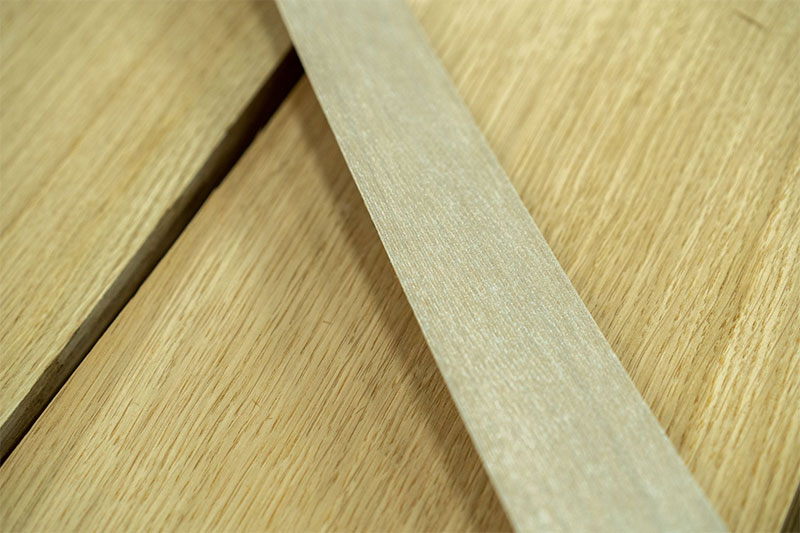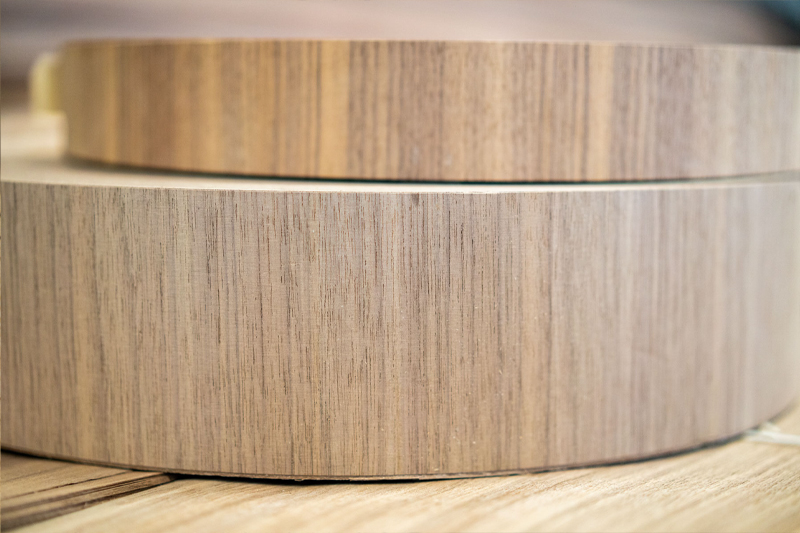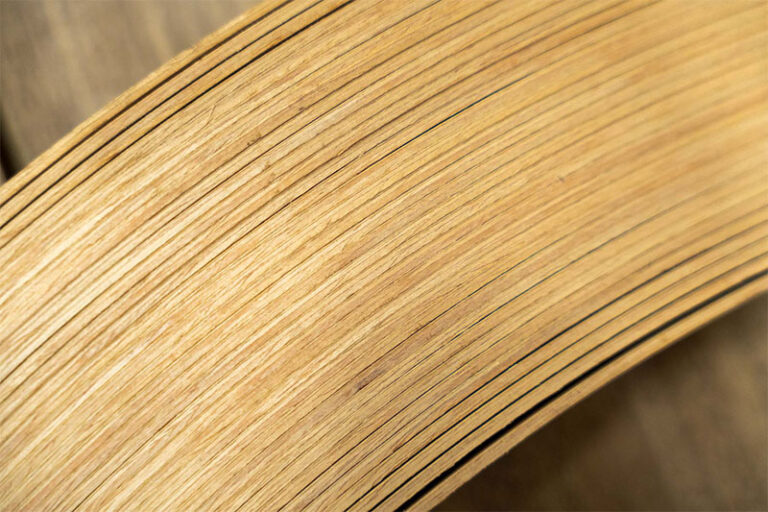Here in Friulevigatura, we are able to make any type of wood species edgebanding in thickness from 0.3mm up to 3.00mm. We can also do general processing of sheet veneer for wrapping and paneling, with the possibility of connecting together the veneer by wire and glue jointing.
All types of wood combined with the countless possible finishes make our offerings distinctly varied. Each product reflects the goal of meeting customer specifications and ensuring a customized supply tailored to individual needs.


How does a veneer edge come into being?
After the first stage of material selection and cutting, we start from such sheets of wood or reconstituted veneer and create a roll of varying lengths and a maximum width of 330mm by joining them by finger-joint or straight joint.
We can then combine endless types of edges, making a product that reflects the customer’s expectations as closely as possible based on the use they envision in their artifacts. In addition, we offer full availability so that all work can be done either with our own material or in outsourcing with the customer’s material depending on a wide variety of market needs.




VAT IT03587760269 – Tax code: 01215890938 – Company data – Privacy policy – Advertising settings
Design by Promoservice